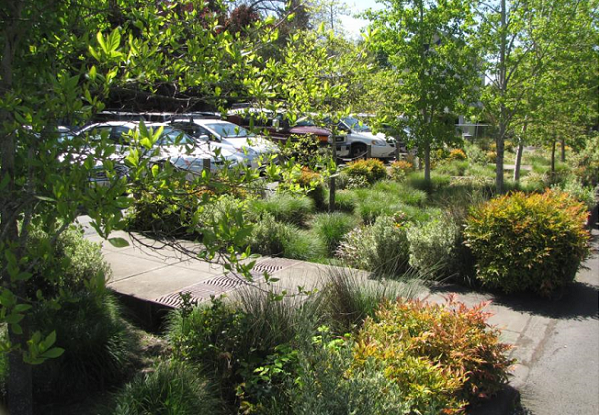
March 5, 2014, by Blue-Green team
Planning for climate change in Nottingham – the potential role of Blue-Green infrastructure
On Friday 21st February, I (Emily Lawson, University of Nottingham) attended a workshop hosted by the Green Alliance Climate Leadership Programme with Lilian Greenwood MP. The workshop title was ‘Planning for climate change in Nottingham’, which resulted in some excellent discussions on strategies for managing future extreme events, e.g. flooding and drought, and the importance of multi-functional landuse and the adoption of measures that in addition to meeting the primary purpose (mitigating and adapting to the effects of extreme weather and climate change) provide economic, socio-cultural, and environmental benefits. The Blue-Green Cities concept was thus favourably received by many of the participants.
Green Alliance are an environmental think-tank that work to ensure that UK political leaders deliver ambitious solutions to global environmental issues. The Climate Leadership Programme was developed to “allow politicians to strengthen their understanding of the science, policy and politics of climate change“. The objective of the workshop was to discover what was happening locally in Nottingham and discuss how this might inform national policy to help mitigate and prepare for climate change.
Participants were from a wide range of organisations, including;
- Nottingham City Council
- Climate East Midlands
- New Meadows Tenants and Resident Association
- University of Nottingham
- Nottingham City Homes
- Nottingham Greenpeace
- Nottingham Energy Partnership
- Inntropy Ltd., the Nottingham Clean Tech Centre
- Friends of the Earth
- Environment Agency
- Arkwright Meadows Community Gardens
- Meadows Ozone Energy Service
- Nourish Associates
The first session introduced climate change impacts and adaptation with talks from Dr Simon Gosling (Lecturer in Climate Change and Hydrology, University of Nottingham) and Paul Lockhart (Flood Risk Manager at the Environment Agency Midlands East). Simon spoke about future projections of climate risks in the UK based on projections from the Met Office’s UKCP09 = warmer and wetter. Increased summer temperatures may lead to increased risk of heat-related illness, increased cooling demand (e.g. air conditioning) water scarcity and impact on crop yield and productivity. On the other hand, increased winter temperatures may lower the heating demand and reduce the number of low temperature-related illness and fatalities. The health effects of projected future climate scenarios is a key topic of contemporary research; see work by Public Health England for the UK Climate Change Risk Assessment (CCRA).
This led to discussion on the future changes in precipitation – wetter winters and drier summers. From a water management perspective, this means that in winter there will be a risk of flooding but in summer the problem shifts to water scarcity and potential drought. Perhaps we need to start looking at strategies that harvest and store the rainfall in winter and use this to mitigate drought in the summer – such waster reuse is a key component of the water sensitive urban design concept (WSUD).
Paul Lockhart then talked about what Nottinghamshire and Derbyshire are doing to reduce some of these risks, such as the 2012 Nottingham Left Bank Flood Alleviation Scheme (£45 million) and the Derby Our City Our River Masterplan (£95 million), an ambitious scheme of urban regeneration through the Derwent river corridor that aims to start work in 2015.
Session 2 discussed local strategies of climate change mitigation and adaptation planning and fed into session 3 which addressed how these ideas could have national implications. Local strategies for discussion included;
- Community engagement and communication
- Health impacts
- Low carbon energy
- Critical infrastructure
- Landuse management and agriculture
- Extreme events – flood/droughts
- Resilience planning and insurance
- Communicating uncertainty
- Changing the local/regional/national planning system
- Learning from other best practice examples
From the discussions, numerous themes were developed addressing potential change in national level policy, such as creating a consistency in planning and looking at early intervention and prevention, rather than reactive strategies. A key theme throughout was the need for a partnership approach and for siloed budgets to be stopped. Property level protection for mitigating future impacts of climate change, e.g. flooding, was also seen as a valid suggestion by most participants but the question of who pays? remained apparent.
Interesting, it was suggested that making space for water and implementation of Blue-Green infrastructure and natural flood risk management could become a national priority. This echoes the thoughts of many academics and flood risk experts (see article in The Guardian on flooding for example) and may provide a more resilient method of mitigating the potentially devastating impacts of climate change.
Let’s see what happens next…
Interested in hearing more about Blue-Green Cities? Check out our website and follow us on twitter!
No comments yet, fill out a comment to be the first

Leave a Reply